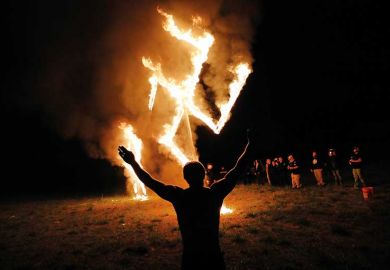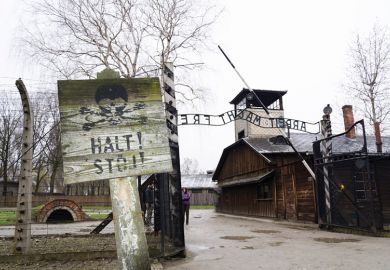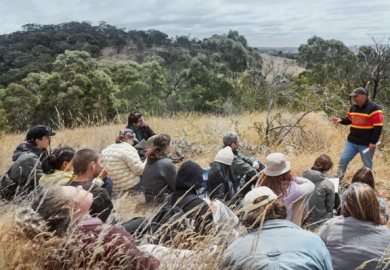This is an important and timely book, and yet, despite its strengths and virtues, it fails to be what it claims, a “history book for the age of ‘post truth’ and ‘alternative facts’”. Why?
Sir Richard Evans is a world-class historian: an expert quester among interesting archives and a wonderful illuminator of well-chosen topics. He’s also – it’s a subtly different skill – a superb reader of other historians, with the sharpest eye for slips and omissions, demonstrated in his utter destruction of Holocaust denier David Irving’s work at the famous trial (the trial archive is even more devastating than Evans’ subsequent book Lying about Hitler). One of his earlier books is titled In Defence of History, and here he quotes the investigative journalist Roger Clark, “bogus history does harm”, and so, eyeing “our own troubled times”, rides out against the ever more popular conspiracy theories that wind around Hitler and the Nazis.
Evans annihilates – that is, reduces to nothing, there is no other word for it – the historical basis of these theories, drawing on his superb command of the sources and wider context. Was the German army stabbed in the back in 1918 by subversive forces on the home front? No, it was already collapsing. Was Rudolf Hess’ flight to Britain in 1941 a secret peace mission? No, Hess’ star had fallen, his journey was delusional: a misguided, isolated throw of the dice to impress the Führer who had all but dismissed him. Was the fire that burned down the Reichstag in 1933, a month after Hitler became chancellor, the result of a plot? No, it was carried out by a lone incendiary, though his action offered the Nazis a powerful opportunity. Did Hitler escape? Absolutely not.
When such an eminent scholar crushes other scholars, it makes my heart sink: in every discipline academic work is hard, so we should try to be respectful. But, here, it’s pretty cathartic and exhilarating, actually, to watch Evans put these money-grubbers, charlatans, liars and – almost always – worse to the sword. But this is not the holy grail he thinks it is.
What’s wrong is demonstrated by the first of Evans’ cases, The Protocols of the Elders of Zion, an expression of one of the earliest and, sadly, longest-lasting conspiracy theories (about the Jews manipulating everything from behind the scenes). The Protocols were a fraud, of course, and Evans brilliantly traces their history, but the problem is revealed clearly by Goebbels, who wrote “I believe in the inner, but not the factual truth, of the Protocols”. Smashing the “factual truth” of a conspiracy theory is not enough; its motivation remains. Evans honestly but quietly admits this in a footnote, glossing a remark by Hannah Arendt on the task of the historian: the point is “not to unmask the Protocols as a forgery or to dismantle its various claims…but to explain why they were accepted as essentially true by fascists and antisemites”.
In this book, Evans is the opposite of Don Quixote: he really is fighting dragons, but putting out flames is not the same as slaying a monster. Conspiracy theories do not follow historians’ rules of engagement about facts, evidence and consistency because they are not works of history and to fight them as if they were is only half the battle. They may look like history on the surface – and appear to share what Evans calls “common structures and modes of argument”, footnotes and so on – but they are really propaganda or hate speech. Evans repeatedly says that motivations vary, but in these cases (with the exception of communists’ accounts of the Reichstag fire), they don’t: they are fascist and antisemitic or, at best, give succour to these causes. You need to be tough on lies – as Evans is – but also tough on the causes of lies.
In his zeal for history and truth, Evans also overstates what we might call the “philosophical mechanics” of his argument. One example: he declares that “why someone puts forward an argument has no bearing at all on the validity or otherwise of the argument itself”, as if a work of history was an objective mathematical problem. But writing history is just not like an algorithm; a historical truth is not the same as a mathematical truth as, ironically, Evans’ work itself shows. He makes sure the reader knows that any specific conspiracy theorist is not a historian but a “financial services marketing specialist”, “farm manager”, “valve engineer” or (my favourite) “son of a self-styled clairvoyant”. His behind-the-lines theory differs so much from his battlefield practice because he wants to believe that historical truth inheres not in the work of historians but in some more objective reality that historians, like physicists at Cern, simply uncover. His belief in truth – while not wrong in itself – is so simplistic that, just at the edge of our vision in this book, he seems to suggest that “the possibility of organising society on rational lines” might be the work not of knights or philosophers but those whom we might call historian-kings who “can establish what is true and what is false by painstaking research”.
In his excellent 2019 book, Conspiracy Theories, the philosopher Quassim Cassam outlines a three-step strategy to defeat them. First, rebuttal: in this, Evans could not be bettered. Second, education, to help people distinguish disinformation. Third, what Cassam calls “outing”, revealing that conspiracy theories are basically forms of propaganda. In other words, what is needed is not only a destruction of these so-called theories, which this book delivers with tremendous and energising force, but also a deconstruction of them, an analysis of what ideas lie behind them and why. The sources of new “post truth” conspiracy theories – QAnon, the wilder Brexiteers, the troll farms in Russia – demand this even more urgently, since they lack any coherent “theory” per se and serve only as disinformation chaff to feed anger.
No single discipline in the humanities is enough to deal with “post truth”. As Evans brilliantly demonstrates, the historical context needs trustworthy explication. The actual texts and their subtexts need detailed attention, as does a sense of audience and authorship, the kind of reading at which literary studies excel. The wider issues of argument, truth, ethics and politics call for philosophers and social scientists. The unquestioned strength of this book, its explicit focus on fighting conspiracy theories as a kind of duel of historians, is also its weakness. The clash of mounted armour might be the most dramatic, but a battle is won by the whole army.
Robert Eaglestone is professor of contemporary literature and thought at Royal Holloway, University of London, where he was also deputy director of the Holocaust Research Institute from 2000 to 2016.
The Hitler Conspiracies: The Third Reich and the Paranoid Imagination
By Richard Evans
Allen Lane, 288pp, £20.00
ISBN 9780241413463
Published 1 October 2020
The author
Sir Richard Evans, formerly president of Wolfson College in Cambridge, was born in London to Welsh-speaking parents. He won “a scholarship to Jesus College, Oxford (in those days, the Welsh college)” to read modern history, he recalls, before moving on to “the more cosmopolitan environment of St Antony’s, a graduate college with strong German links. It was a hugely exciting time, with the History Workshop starting up, the English Marxist historians producing their major works and modern German history just opening up, especially through the great Fritz Fischer, whom I got to know when he was a visiting professor in Oxford.”
As a child, Sir Richard was “fascinated by the many bomb-sites in the East End [of London], and by my parents’ stories of the war. In the late 1960s and early 1970s the rise of neo-fascism raised the question of the long-term roots of the Hitler regime, which were the focus of my doctoral dissertation.” He went on to teach “a document-based special subject at the University of East Anglia on the Third Reich” and continued teaching the same period at Birkbeck, University of London and Cambridge. Although his earlier work ranged very widely across German social history – from the underworld to the bourgeoisie, from feminism and the family to capital punishment – he is best-known for his three-volume history of the Nazi era, published in 2003-8.
Asked why Hitler remains so potent a figure in conspiracy theories 85 years after his death, Sir Richard responds: “In a secular age, Hitler appears to most people as a kind of substitute for Satan, the ultimate icon of evil; for a much smaller number of people, he counts as a great historical genius. Either way, he is instantly recognisable, so conspiracy theories tend to cluster around him, as they do around famous events such as 9/11 or [the assassination of] JFK.”
Matthew Reisz
POSTSCRIPT:
Print headline: Truth is a battlefield
Register to continue
Why register?
- Registration is free and only takes a moment
- Once registered, you can read 3 articles a month
- Sign up for our newsletter
Subscribe
Or subscribe for unlimited access to:
- Unlimited access to news, views, insights & reviews
- Digital editions
- Digital access to THE’s university and college rankings analysis
Already registered or a current subscriber?








